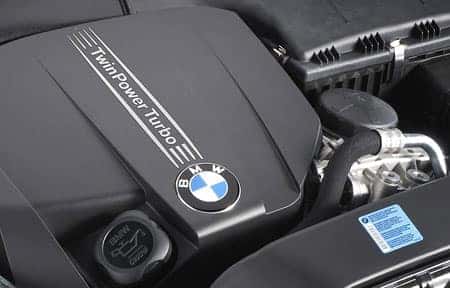Unveiling the Keys Behind the Power of the BMW Engine
Unveiling the Keys Behind the Power of the BMW Engine
Blog Article
Checking Out the Development of Combustion Engines in Modern Transportation Solutions
As we browse the landscape of contemporary transportation, the evolution of combustion engines stands as a testament to human ingenuity and design expertise. From their modest starts to the innovative giants propelling lorries today, combustion engines have gone through an exceptional journey of development and adaptation. Understanding the intricacies of this evolution not only drops light on the past however also paves the means for picturing what exists ahead in the realm of transport modern technology. The interplay of background, innovation, and environmental concerns in forming the trajectory of burning engines produces a narrative that is both engaging and insightful.
Very Early Beginnings of Combustion Engines
Exactly how did the principle of burning engines very first arise in the onset of transport development? The origins of combustion engines can be mapped back to the 17th century when the principles of internal combustion were initial explored. In 1673, Christian Huygens conceived a fundamental internal burning engine that utilized gunpowder to create power. However, it had not been till the late 19th century that useful applications of burning engines in transport started to arise.
The development moment included the creation of the first successful gasoline-powered engine by Karl Benz in 1885 - bmw engine. This engine led the way for the development of the modern car, revolutionizing transport systems worldwide. Succeeding advancements by Nikolaus Otto and Gottlieb Daimler further improved burning engine technology, bring about the automation of autos and the rapid expansion of the transport industry
These early combustion engines were defined by their simplicity and performance, laying the foundation for the complex and powerful engines utilized in modern-day transport systems. The evolution of combustion engines has actually contributed in forming the means we take a trip and move products, marking a significant milestone in the history of transport advancement.
Transition to Internal Burning Technology
The transition to internal combustion technology noted an essential change in the advancement of transport systems. This shift started in the late 19th century, with developers like Nikolaus Otto and Gottlieb Daimler developing the initial successful interior burning engines. These engines transformed transport by providing an extra effective and effective option to vapor engines and electrical motors.
Among the essential benefits of interior combustion engines was their capacity to be reduced to suit lorries, resulting in the growth of vehicles and motorcycles. This shift from bulky, stationary engines to portable, mobile ones led the means for the modern-day transportation systems we see today.
The shift to internal burning innovation additionally spurred developments in gas technology, resulting in the growth of gasoline and diesel as key fuel resources for automobiles. This shift not just made transportation a lot more available to the masses yet likewise laid the structure for the oil and gas market to come to be integral click to worldwide economic situations.
Impact of Combustion Engines on Transport
The fostering of combustion engines in transportation systems militarized a profound shift in the performance and rate of global wheelchair. Burning engines revolutionized transportation by supplying a dependable and flexible resource of power for numerous vehicles, including cars, ships, vehicles, and planes. This technology dramatically boosted the capability for people and products to conform fars away in much shorter time frames, resulting in boosted connection in between areas and nations.
Moreover, the extensive use combustion engines has had a significant effect on financial growth. The capability to deliver items effectively has actually spurred trade and business, permitting organizations to increase their markets and get to consumers worldwide. This has promoted financial development and globalization, as items can now be carried quicker and in larger amounts than in the past.
Nonetheless, the ecological effect of combustion engines can not be overlooked. The burning of fossil gas has resulted in air contamination and greenhouse gas exhausts, adding to climate adjustment and posturing health and wellness dangers to populaces. bmw engine. As an outcome, there is a growing focus on establishing alternative propulsion technologies to alleviate these unfavorable results and produce a more lasting future for transportation
Innovations in Burning Engine Design
One remarkable advancement is the advancement of turbocharged engines, which make use of exhaust gases to drive a turbine that compresses incoming air, allowing for more gas to be burned, resulting in raised power output without a substantial boost in engine size. Variable valve timing systems have likewise revolutionized engine layout by enhancing air movement at different engine speeds, improving both power and performance. These innovations collectively contribute to the constant improvement of combustion engines in contemporary transportation systems.
Future Patterns in Burning Engine Advancement
With technology improvements driving continuous advancement, the future of combustion engine advancement is poised to transform transport systems globally. One of the essential patterns in combustion try these out engine growth is the push in the direction of better efficiency and decreased emissions.
Another noticeable trend is the adoption of hybrid modern technologies in combustion engines. Hybrid engines integrate standard combustion technology with electrical power, offering enhanced fuel effectiveness and reduced exhausts. As the vehicle market changes towards electrification, hybrid burning engines are viewed as a transitional remedy that bridges the void between conventional vehicles and completely electric ones.
Furthermore, the assimilation of wise technologies, such as man-made knowledge and data analytics, is expected to play a significant duty in the future of combustion engine advancement. These modern technologies can optimize engine efficiency in real-time, causing extra effective burning processes and boosted total lorry efficiency. Welcoming these future trends will certainly not just drive technology in burning engine advancement however likewise add to a more lasting and environmentally pleasant transport ecosystem.

Conclusion
In final thought, the evolution of burning engines in modern transport systems has been marked by considerable developments in modern technology and layout. From the very early starts of combustion engines to the change to go interior combustion innovation, these engines have had an extensive influence on transportation.
The origins of combustion engines can be mapped back to the 17th century when the concepts of internal combustion were first discovered. These engines reinvented transportation by supplying an extra powerful and reliable choice to steam engines and electrical motors.

Report this page